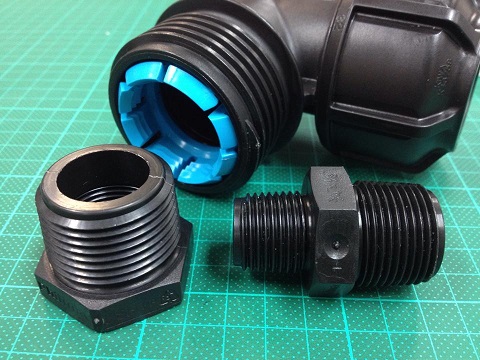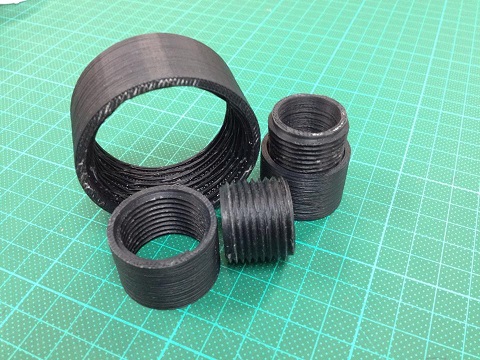Shaping the future: Our strategy for research and innovation in humanitarian response.

Shaping the future: Our strategy for research and innovation in humanitarian response.

The last two weeks have seen our team replicating and 3D printing the threads that are used on most of the parts we want to print. This was a really good exercise that helped us gain a much better insight into how the connection parts work and the printing process.
For example, based on earlier research, we knew that there are various types of threads and that they are quite complex and precise in their measurements. So replicating these was a great way of testing how small of a thread we can print. The results were great as we have been able to successfully replicate, print and use the smallest thread that we have identified from the Oxfam catalogue.


Equally importantly, we were happy to see that the process of printing the thread requires very little in the way of a support structure because of the angle on the thread is self-supporting. This is a big plus as the need for a support structure means that more material is needed. In turn, this means that time has to be spent removing the supports, and this process can sometimes affect the structural integrity of the part when removed.
Understanding this process will help guide the future direction of modelling and printing to make sure we can make the prints as cheaply, efficiently and effectively as possible – whilst maintaining the necessary structural resilience and strength.

 Please upgrade your browser
Please upgrade your browser
You are seeing this because you are using a browser that is not supported. The Elrha website is built using modern technology and standards. We recommend upgrading your browser with one of the following to properly view our website:
Windows MacPlease note that this is not an exhaustive list of browsers. We also do not intend to recommend a particular manufacturer's browser over another's; only to suggest upgrading to a browser version that is compliant with current standards to give you the best and most secure browsing experience.